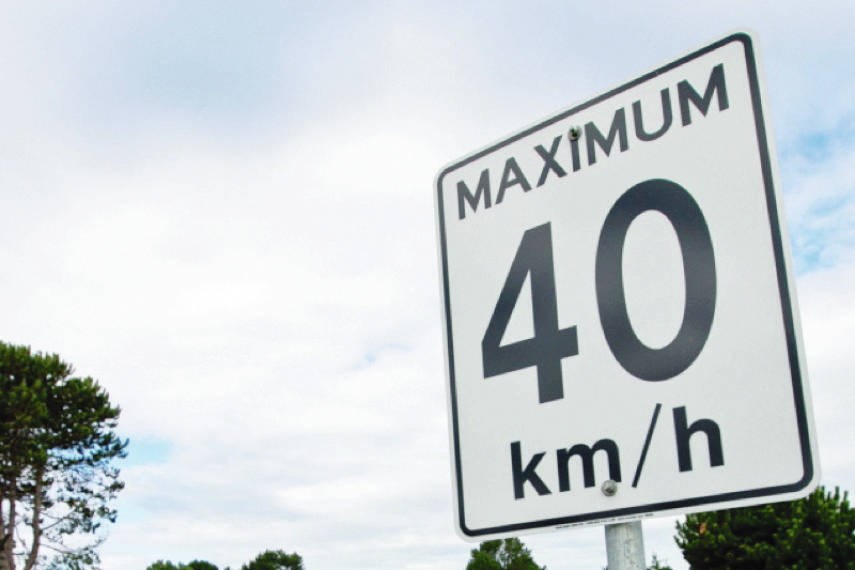Saanich council has voted to move forward with a three-year pilot project to lower the default speed limit on residential roads — those without a centre yellow line — to 40 km/h from 50 km/h.
The pilot project will likely begin next year, said Saanich Coun. Judy Brownoff.
In recent months, the district has been trying to persuade other municipalities to join the initiative, which requires an application to the provincial Transportation Ministry under the Motor Vehicle Act.
In August, Saanich Mayor Fred Haynes said he had enlisted 10 other capital region municipalities to take part, noting reduced speeds will reduce deaths and injuries, and help fight climate change by making side roads safer and encouraging more people to get out of their cars and walk or cycle.
Saanich Coun. Ned Taylor said he had wanted the speed limit dropped to 30 km/h, since it’s safer, but the rest of council preferred to stick with 40 km/h, the option “preferred by regional partners that we’re working with.”
Taylor said he’s pleased that council is moving forward on the issue. “This is an important issue and overall we’re making progress, and this is a good first step.”
Brownoff said dropping the default speed limit to 30 km/h would make it tougher to get participation from other municipalities.
“Our goal was to see how many municipalities we could get in the tent.”
Corey Burger of the Greater Victoria Cycling Coalition said there is considerable evidence from other cities that a 30 km/h speed limit is the best option to reduce crashes, “and also to increase the comfort of people who are walking or hiking.”
Sue Stroud of the Better Transit Alliance of Greater Victoria agreed, saying the number of deaths and injuries rises dramatically with every 10 kilometres per hour over 30. “Forty’s a good start, but 30 would be a lot better,” she said. “I think we’ll just keep trying to persuade them that 30 is a lot safer and people get where they’re going just as fast.”
A Saanich staff report says collisions at 30 km/h or less or correlated with a 10 per cent probability of death, which rises to 40 per cent at 40 km/h and 80 per cent at 50 km/h. It notes that crashes at higher speeds are more forceful, and drivers have a narrower field of vision, reduced reaction time and longer braking distance.
Stroud said lower speed limits would benefit people who use the bus.
“Transit riders have to walk to get to bus stops, often on narrow streets with no sidewalks,” she said. “You can’t expect people to ride transit if they can’t get to the bus safely.”
Victoria council amended its streets and traffic bylaw in 2014 to lower speed limits on many streets, including collector and arterial streets, to 40 km/h. The speed limit on Cook Street between Southgate Street and Dallas Road was reduced to 30 from 50 km/h.
Oak Bay voted to move to a 40 km/h limit on most streets in 2016.
Public-health officials in B.C. have previously called for a 30 km/h speed limit, including then-provincial health officer Dr. Perry Kendall in 2016. A similar stance has been taken by the United Nations and the World Health Organization, wproponents of lower speed limits said.
jwbell@timescolonist.com
